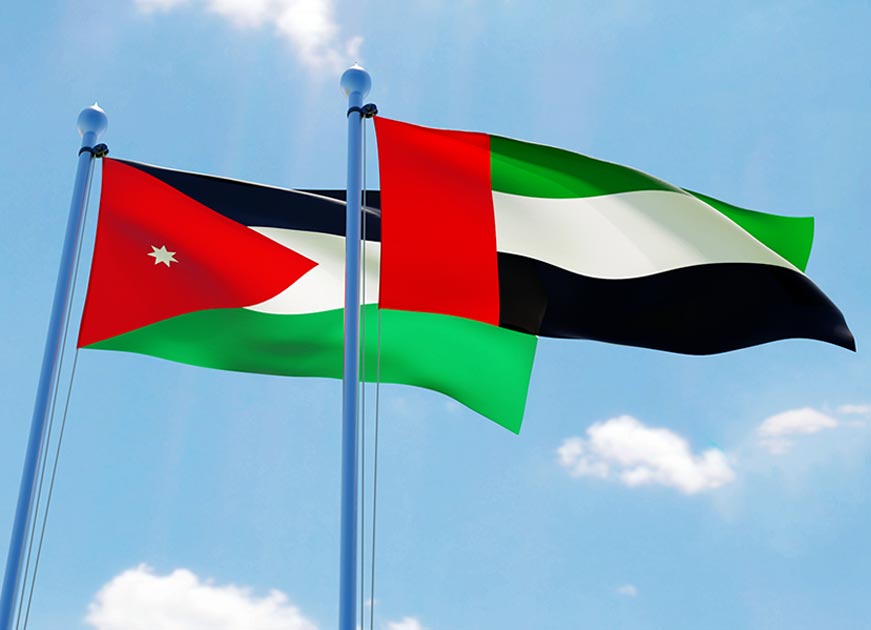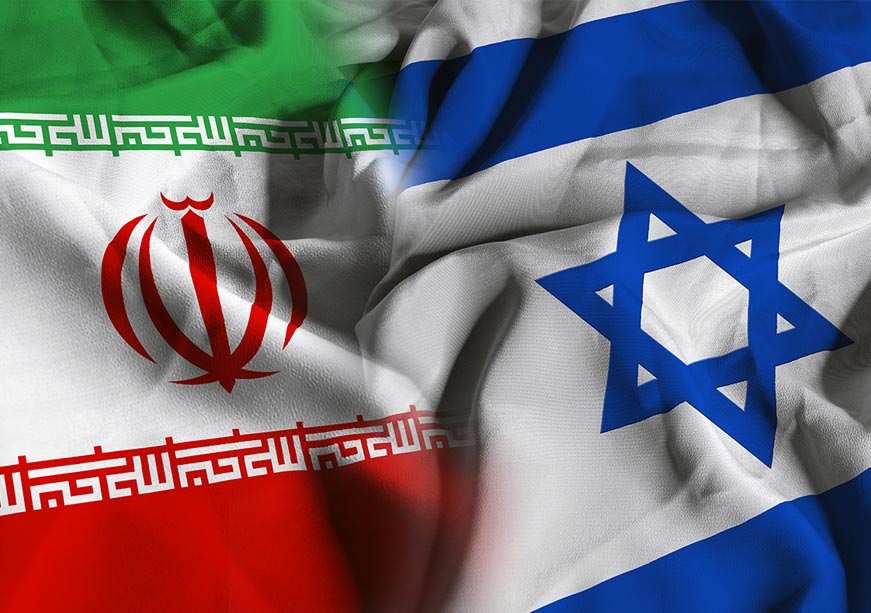The Gulf Cooperation Council (GCC) is projected to experience exponential population growth in the coming years, which will undoubtedly compound waste generation. In parallel, the region is accelerating domestic food production efforts to meet growing demand and enhance food security, resulting in increases in agricultural residues and food waste. These trends are driven by factors such as rising affluence, cultural preferences towards consuming new goods, and the short shelf-lives of imported food. To illustrate, in 2023, the amount of agricultural waste collected in GCC countries increased by 44 percent, while the amount of food waste in 2022 averaged 150kg per capita annually, surpassing the global average by 14 percent.
Waste-to-Energy (WtE) refers to the process of generating electricity or heat from waste treatment. While incineration tends to be more prevalent, anaerobic digestion (AD) and pyrolysis are commonly deployed to convert organic matter into biogas and bio-fertiliser. Converting waste into energy presents several co-benefits, namely strategic waste management enforcement, landfill diversion, material recovery, resource looping, and contributions to renewable energy. Given converging national commitments towards promoting circular economy principles and reducing food loss and waste, WtE through AD and pyrolysis offers a nascent yet economically viable solution to address agriculture and food waste, meet facility-level energy needs, and promote regenerative agriculture. This article assesses the evolving WtE landscape across the Gulf, evaluating opportunities and key challenges to leverage WtE within the region’s rapidly expanding agriculture sector.
Converging National Policies Enable Catalysation of WtE Growth
All six GCC countries have established targets for renewable energy production, but WtE currently comprises a tiny fraction of this output. Harnessing WtE conversion potential first requires developing a strong foundation for waste collection, separation, and management. Despite progress, the GCC countries’ waste management strategies are greatly limited to landfilling, which currently processes more than 85 percent of the region’s waste. Currently, less than 20 percent of solid waste is adequately treated, and less than 5 percent is recycled. Food waste comprises the largest portion sent to landfills and is the primary source of methane. This strategy will also likely falter in the long term for countries like Qatar, Kuwait, and Bahrain, which have limited land capacity.
A handful of GCC countries have instituted converging waste, energy, and circular economy policy commitments, enabling WtE to gain traction over the last five years. Well-established and commercial-scale plants exist in the UAE and Qatar and are rapidly materialising in Saudi Arabia, Bahrain, Oman, and Kuwait. These plants largely convert municipal solid waste (MSW), which includes organic food waste, to electricity through incineration, a process that releases carbon emissions from burning, albeit to a lesser extent than landfilling.
| Country | Waste Policy | Energy Policy | Circular Economy Policy | Food Security Policy | WtE Facilities |
| UAE | National waste management regulations | UAE’s Energy Strategy 2050 | UAE Circular Economy Policy 2021 – 2031 | UAE National Food Security Strategy 2051 aims to reduce food waste by 50 percent by 2030 | Sharjah: commercial-scale 30-MW WtE plant launched in 2022
Dubai: 200-MW WtE facility to power more than 120,000 households) Abu Dhabi: 100-MW WtE facility in development to power nearly 20,000 households |
| Saudi Arabia | Saudi Green Initiative (SG) targets 94 percent landfill-waste diversion by 2035 | Renewable Vision 2030 aims to produce 3GW of WtE | Saudi Arabia Circular Carbon Economy (CCE) Framework | Saudi Arabia Food Security Strategy and Implementation Plan up to 2030
Food waste accounts for 40-50 percent of the country’s waste |
In development: Riyadh (200MW), Jeddah (100MW), NEOM |
| Qatar | Qatar Third National Development Strategy (2024 – 2030) aims to reduce waste generation and increase recycling | Qatar National Renewable Energy Policy promotes energy diversification | Qatar National Vision 2030 and Third National Development Strategy | Qatar National Food Security Strategy 2030 and State Food Security Project
aims to address 55 -70 percent of food loss and waste through sustainable solutions |
Operational: 34-MW WtE facility operating in Mesaieed (since 2011) |
| Kuwait | Kuwait National Waste Management Strategy (KNWMS 2040) aims for 20 percent energy recovery from sewage sludge | Kuwait Energy Diversification Objectives | Kuwait Environment Public Authority | Kuwait Supreme National Committee for Strengthening the Food, Drug, and Water Security System (August 2022) | In development: 100-MW Al Kabd WtE plant, and RDF Plant in Mina Abdullah
|
| Oman | New Waste Management Law | Oman Energy Master Plan 2040 | Oman Vision 2040 | Oman Sustainable Agriculture and Rural Development Strategy towards 2040 | In development: 95-100 MW Barka WtE (operational by 2031)
Also deploys landfill gas capture to convert methane |
| Bahrain | Bahrain National Waste Management Strategy (2018) | National Renewable Energy Plan targets biogas production and landfill gas recovery | National Action Plan, Blueprint Bahrain | Bahrain National Initiative for Agricultural Development | In development: Askar 25MW biopower project |
Source: Compiled by the author from various sources
Expanding WtE in the GCC’s Agriculture Sector
The GCC countries have set forth national vision and food security strategies outlining commitments towards accelerating domestic food production and food waste reduction initiatives. Agriculture, food, and beverage facilities should consider implementing on-site, localised and integrated AD and pyrolysis systems through industrial symbiosis to extend the life of scarce resources and encourage closed-loop processes. GCC countries are increasingly leveraging AgriTechnologies to boost resource efficiency amidst water and climate constraints, but this can be energy-intensive. Therefore, converting food residue into biogas through anaerobic digestion (AD), a process where micro-organisms decompose organic matter to produce biogas, can help meet facility-level energy needs. Pyrolysis converts organic waste and digestate byproducts from AD into biofuel or biochar, which strengthens soil fertility and water retention, reducing irrigation needs. The GCC’s existing crop commodities (date palms, cereal, fruits and vegetables) and animal waste are all suitable and energy-rich feedstock inputs for AD and pyrolysis. One study notes that GCC crop residues offer 1.68 Mtpa of untapped energy, while animal waste offers 25.52 Mtpa, offsetting up to 13.35 percent of current electricity consumption. AD also has a lower environmental impact compared to incineration.
Compared to stand-alone operations, on-site integrated AD and pyrolysis systems offer more cost-effective, water- and energy-efficient solutions. Electricity generated from biogas is minimal compared to conventional sources if pursued on a larger scale. Additionally, unlike MSW feedstock, agricultural waste quantities may fluctuate depending on the harvest season. However, when paired with renewables like solar, biogas can help meet facility-level electricity demand. On-site infrastructure would save resources allocated towards transferring waste for sorting and complement reuse methods like composting. Challenges include managing the heterogeneity of food waste, which risks influencing the quality of feedstock that can be converted into biogas.
Diverting organic waste from landfills would also help reduce water contamination, while biochar products would help reduce dependence on water-intensive synthetic fertilisers. Combining these processes with growing efforts to leverage local water treatment and reuse systems for the agriculture sector would reduce pressure on constrained water systems. Ensuring compliance with water quality standards and monitoring and deploying alongside comprehensive awareness campaigns would prevent unwanted contamination and ease concerns that inhibit technology uptake in the region.
Despite the proven technical feasibility of generating biogas from AD across Oman, Qatar, and Kuwait, the strategy remains heavily underutilised. The potential electricity generated from Oman’s organic waste could offset up to 22.5 percent of the country’s total energy consumption, yet it is currently managed through landfills. In Qatar, the traditionally landfilled organic fraction of municipal solid waste, livestock manure, and sewage sludge waste can all be valorised through AD to generate 3.5 million MWh of surplus clean energy. In Kuwait, food waste is the most energy-rich feedstock, yet biogas contributes to zero percent of the country’s renewable footprint.
Scholars note the economic feasibility of AD in the UAE, Saudi Arabia, and Bahrain. In the UAE, AD matches the economic feasibility of incineration. In Saudi Arabia, an abundance of food waste and low annual operational costs make biomethanation (a form of AD) a suitable option. The levelised cost of energy produced from biomass is also comparable to that of solar in Saudi Arabia. In Bahrain, establishing an AD plant to treat biodegradable waste is expected to generate 213.3 GWh/y with approximate annual revenues of US$4.2 million a year from electricity sales.
Organisations like ReFarm in Dubai have taken the initiative to integrate high-tech food waste recycling in their closed-loop food production system. ReFarm is a waste-to-value gigafarm producing more than 3 million kg of food powered with energy produced from incinerating its solid waste. Khalifa University has also researched the use of pyrolysis to transform green farm waste into biochar, which helps sequester atmospheric carbon dioxide when reused in soil, contributing to regenerative agriculture. The Gulf can also learn from Egypt, where companies like Wastilizer convert animal waste into water, biogas and plant fertiliser, enhancing crop and water quality. As domestic agricultural production grows, there is unharnessed potential to leverage on-site WtE in agricultural centres.
Next Steps to Capitalise on the Gulf’s WtE Potential
Implementing and scaling pilots remains a challenging feat since developing WtE remains a highly capital-intensive process, competing against lower-cost traditional landfilling methods in the immediate term. Many regulatory frameworks and financial incentive structures are still emerging and lack consistency. Small-scale initiatives would benefit from state-led tax incentives for the private sector, carbon credit allowances, and increasing landfill gate fees to increase appeal for AD development in the GCC. Financial feasibility would increase if combined with strict waste disposal regulations, strengthened integration between research, policy, and development, and the development of markets for biochar and digestate fertiliser. Establishing joint ventures and de-risking innovation through blended finance, like green sukuk, would also help scale efforts.
Effective waste-to-energy operations also hinge on receiving consistent and high-quality feedstock sources to maximise energy generation. However, the efficiency of collection and sorting processes, as well as the quality and scale of logistics and agricultural infrastructure, currently vary among GCC countries, limiting the consistency of feedstock quality. While countries like the UAE lead in food value chain innovations, others like Oman could benefit from integrated capacity building to facilitate technology adoption by small-scale farmers.
Ensuring consistent feedstock for WtE should not overshadow the underlying need to regulate unsustainable consumption practices. Thus, prevention, reuse, and recycling should remain at the forefront of sustainable waste practices. WtE should incentivise strengthening implementation of stronger public awareness, recycling, and waste segregation programmes to help cultivate better habits, facilitate and improve waste operations.
Conclusion
WtE is rapidly gaining momentum in the Gulf, with the potential to become a highly lucrative industry. Organic waste from food comprises a significant component of MSW but remains highly underutilised in Gulf countries. As the GCC strategises improvements in waste management practices and feasibility studies continue to highlight the versatility of WtE in the region, this solution emerges as a strong contender to promote closed-loop economies, especially for expanding sectors like agriculture. Catalysing WtE in the agricultural sector to reap the strategic benefits for the water-energy-food nexus will require harmonising waste management and water reuse standards across the GCC and reducing upfront financing barriers through public-private initiatives.
Leigh Mante is a Junior Fellow, Climate and Energy at ORF Middle East.












